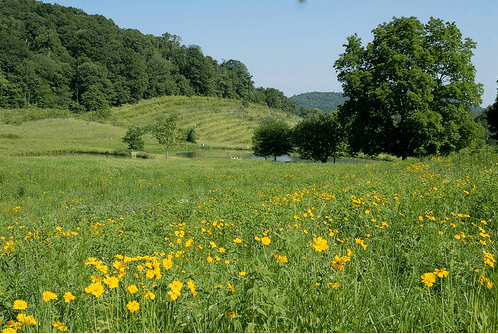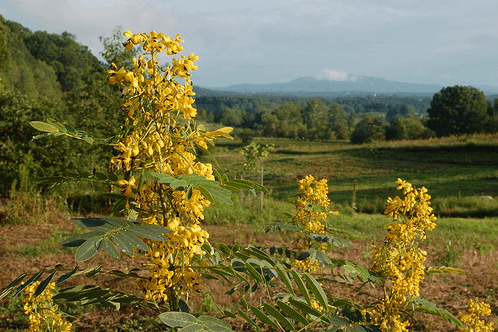When we think of farms and conservation, we usually think of water quality and open space. Sam Quinn of The Farm at Sunnyside in Washington VA wants us to think about something else too: wildlife. Namely, how, with a little thought, biodiversity can help improve a farmer’s bottom line. That was his message to scientists and conservationists attending the International Congress for Conservation Biology In Baltimore last week. The Farm at Sunnyside covers 420 acres in Rappahannock County hard up against Shenandoah National Park, but only 25 of those acres are cultivated.

The rest are actively managed for wild plants and animals, including berries, paw paw, pollinators, and more, which provide goods (for sale at the Reston VA and Washington DC Dupont Circle farmers markets) and ecosystem services (such as, well, pollination for one thing). So, in addition to the organic fruits, vegetables and herbs grown on site, The Farm at Sunnyside harvests wild serviceberry, mint and paw paw from its acreage, maintains meadows and wetlands to filter runoff entering irrigation ponds, and then sells the meadow flowers when they bloom.
Quinn admits that their wild crops don’t generate a lot of revenue, but as native plants in their natural habitat, they also don’t require much cost either. He notes, for example, that the zebra swallowtail butterfly is the only predator of paw paw. And by systematically mapping the wild habitat and agricultural production on each parcel of the farm, Quinn and colleagues were able to determine that 55 acres were entirely unproductive – not useful for crops or wildlife – and were actually costing the farm money for mowing each year. By investing some upfront money and effort, they converted these areas into wildlife habitat and reduced the annual mowing costs. Mapping also helps them avoid wildlife conflicts. By knowing where the bobcats and bears hang out, they can avoid placing the henhouse in their paths. And by enhancing habitat for bluebirds, screech owls and kestrels, they encourage natural pest control.

Making this all work isn’t necessarily easy – Quinn is on staff as a conservation manager, a position that few farms maintain. But with careful monitoring, thought, planning and a bit of branding, The Farm at Sunnyside seems to be making it work – at least they have since 2008 when the current owners took over. For those interested in learning more of the details about just how they do it, check out their conservation report online.

